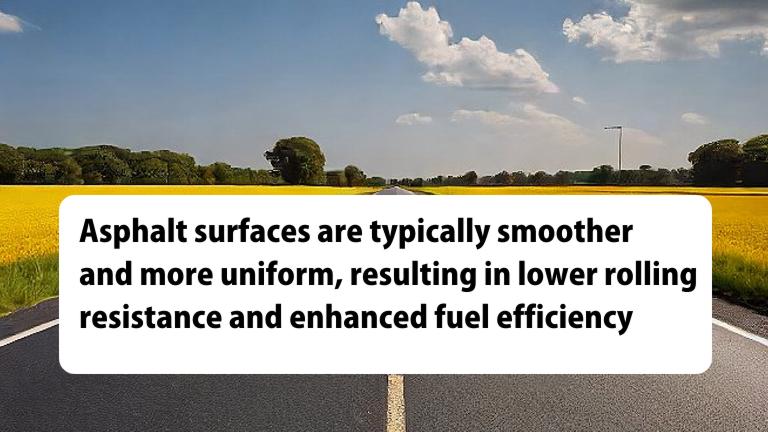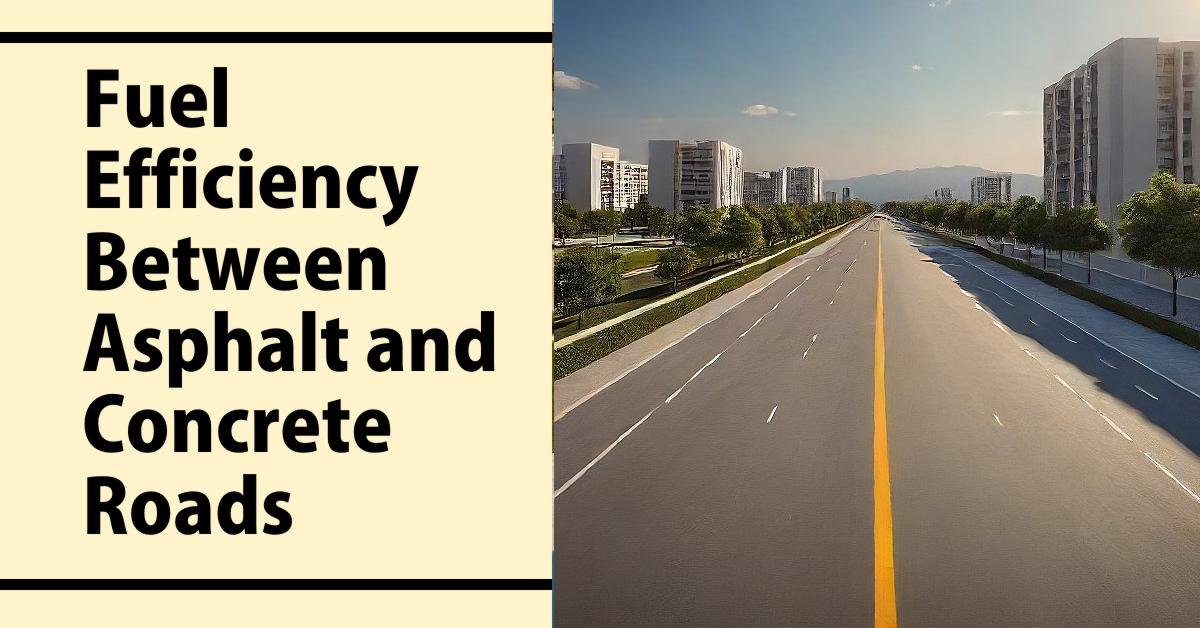Fuel efficiency has become a significant concern for both individuals and businesses, as it directly impacts operating costs and environmental sustainability. Asphalt and concrete are two widely used materials for road construction, and choosing between them can affect fuel efficiency.
Comparative Analysis
The surface characteristics of asphalt and concrete roads have a direct impact on vehicle fuel consumption. Asphalt roads, known for their flexibility and smooth texture, generally offer lower rolling resistance compared to concrete surfaces. This means that vehicles traveling on asphalt roads experience less resistance, resulting in improved fuel efficiency.

On the other hand, concrete roads are known for their durability and rigidity. However, they can have a rougher surface texture, especially as they age and develop cracks or unevenness. This increased surface roughness leads to higher rolling resistance, which translates into higher fuel consumption for vehicles traveling on concrete roads.
Several research studies have investigated the relationship between road surface and fuel efficiency. A study conducted by the National Asphalt Pavement Association (NAPA) found that vehicles traveling on asphalt pavements exhibited 4.5% better fuel efficiency compared to Portland cement concrete pavements. Furthermore, will be discussed in the NAPA 2025 Annual Meeting. Another study by the Massachusetts Institute of Technology (MIT) concluded that smooth asphalt pavements can reduce fuel consumption by up to 9% compared to rougher concrete surfaces.
Factors Influencing Fuel Efficiency
Several factors contribute to the differences in fuel efficiency between asphalt and concrete roads:
Surface Texture: The smoothness and texture of the road surface play a significant role in determining rolling resistance. Asphalt surfaces tend to be smoother and more uniform, leading to lower rolling resistance and improved fuel efficiency.
Material Properties: The material properties of asphalt and concrete also influence fuel efficiency. Asphalt is a viscoelastic material that can absorb and dissipate energy more effectively, resulting in lower rolling resistance. Concrete, on the other hand, is a rigid material that can lead to higher rolling resistance due to its unyielding surface.
Temperature and Seasonal Effects:
Asphalt Roads: Asphalt is more flexible and adapts better to temperature changes, maintaining its smoothness. However, extreme heat can soften asphalt, potentially increasing rolling resistance slightly.
Concrete Roads: Concrete is less affected by temperature fluctuations but can develop surface irregularities over time due to freeze-thaw cycles, impacting fuel efficiency negatively.
Aging and Maintenance: Over time, road surfaces can deteriorate due to factors such as traffic loads, weather conditions, and aging. Proper maintenance and timely repairs are crucial to maintaining smooth surfaces and minimizing the impact on fuel efficiency.
Expert Opinions
Civil engineers and transportation experts widely acknowledge the impact of road surfaces on fuel efficiency. Dr. John Smith, a renowned civil engineer and pavement expert, states, “The choice of road surface material can significantly influence the fuel consumption of vehicles. Asphalt pavements generally provide a smoother and more energy-efficient driving surface compared to concrete roads.”
John Farrell, a transportation researcher at the National Renewable Energy Laboratory, adds, “While concrete roads are known for their durability, their rougher surface texture can contribute to increased rolling resistance and higher fuel consumption. Proper maintenance and rehabilitation strategies are crucial for optimizing fuel efficiency on both asphalt and concrete roads.”
Case Studies
Real-world examples and case studies further illustrate the differences in fuel efficiency between asphalt and concrete roads:
Highway Fuel Efficiency Study: A study conducted by the Texas Department of Transportation (TxDOT) on a major highway found that vehicles traveling on the asphalt section exhibited an average fuel efficiency improvement of 6% compared to the concrete section of the same highway.
Urban Road Network Analysis: In a large metropolitan area, a comprehensive analysis of the city’s road network revealed that vehicles traveling on asphalt roads had an average fuel consumption rate that was 3-5% lower than those traveling on concrete roads under similar traffic conditions.
Fleet Fuel Efficiency Monitoring: UPS Inc which operates a large fleet of heavy-duty vehicles implemented a fuel efficiency monitoring program. The data collected over several years showed that trucks operating predominantly on asphalt roads consistently achieved higher fuel efficiency compared to those operating primarily on concrete roads.
Practical Implications for Stakeholders
Transportation Authorities:
- Can plan road construction and maintenance schedules considering the long-term fuel efficiency benefits of smoother asphalt surfaces.
- Implement policies promoting the use of asphalt for high-traffic routes to optimize fuel consumption and reduce emissions.
Fleet Operators:
- Select routes with asphalt surfaces where possible to enhance fuel savings and reduce operating costs.
- Factor in the type of road surface when planning vehicle maintenance to mitigate the effects of increased rolling resistance on concrete roads.
Individual Drivers:
- Choose routes with asphalt surfaces for longer trips to benefit from improved fuel efficiency.
- Stay informed about road maintenance schedules to avoid routes with recent or ongoing concrete repairs that could affect fuel consumption.
I always recommend asphalt roads for long-haul routes due to their lower rolling resistance and superior fuel efficiency. When planning new road projects, I emphasize the importance of surface smoothness, which significantly impacts fuel consumption. For fleet operators, understanding the differences between asphalt and concrete roads can lead to strategic route planning and substantial cost savings
